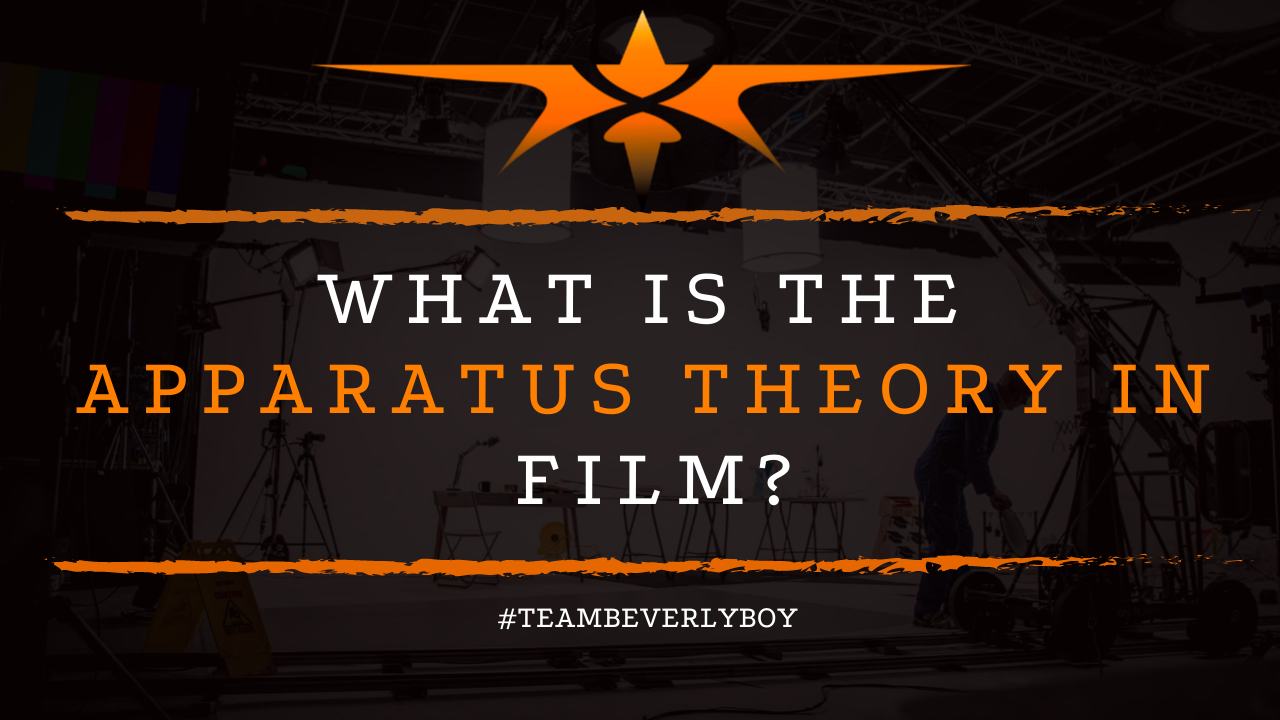
What is the Apparatus Theory in Film?
Throughout the 1960s a number of psychoanalytical theories began to arise out of which film and cinema studies would heavily focus on. Later, in the 1970s, the Apparatus theory in film became the dominant method of film analysis. You’re probably wondering, “What is apparatus theory in film?” and more importantly, what does it mean?
What is Apparatus Theory in Film?
Apparatus theory represents a form of film study and analysis which essentially concludes that film and cinema is ideological due to the nature of the mechanics in cinema and the fact that films are created as a representation of reality. Additionally, the idea of a spectator that watches a film is ideological as well. The entire meaning of film being focused on delivering composition that is realistic and in the most simplistic terms, the process of and mechanics of filmmaking make representation of the subject close to real no matter how it’s put together frame by frame.
Thus, apparatus theory suggests that the cinematic apparatus sets before the eyes and ears realistic sounds and images but technology thus disguises how the reality is delivered frame by frame. As such, the meaning of a film and the means in which a viewer experiences a film is fully subject to the construction and mechanics of the filmmaking process which include the camera work and editing. The end effect being ideological due to the fact that the work is reproduced reality which is experienced by the viewer on a deep level.
The idea of apparatus theory in film surrounds cinema and audience connections and relationships in film. Apparatus theory pulls much of its core values from Marxist film theory, psychoanalysis, and film semiotics. Acting as a flagship, apparatus theory conveys details as to how a film spectator reacts and digests events and images that are relayed through the eyes of the camera. Surviving at the head of ethics, morals, and ideals, apparatus theory in film is sometimes referred to as an observer-oriented theory because the main focus of study here is on how the film is interpreted or how the viewer reacts to the otherwise realistic delivery of events and images through the camera lens.

How Did Apparatus Theory in Film Come About?
You’re probably wondering how the study of film in this capacity became evident and popularized in the 1970s. Apparatus theory in film evolved from some of the ideals that existed among the psychoanalysis of film and the individual teaches or training of Karl Marx. Together, these two film studies employ the notions and stances that are common in the apparatus film theory.
This form of film study became popularized in the 1970s as a result of an evolution of the ideas the define ideals, particularly those of psychoanalysis and Karl Marx’s film studies. Although psychoanalysis and Marxism were two very poplar forms of film study in the 1960s and in years just prior, apparatus film theory takes these same notions and primary elements of concern that were important then, and places equal importance on many of the same teachings now.
The Theory Behind Apparatus Theory in Film
So what’s behind apparatus theory in film? The theory behind this means of cinematic study and reflection approaches the study of cinematic devices which capture and record optical images. Through the demands of the cinematic bible, which we see in film scripts, apparatus theory seeks to represent a chain that connects the audience and the image seen through the eyes of the movie camera.
Apparatus theory is the affinity ability for the movie audiences and the eyes of the movie camera to be used in a film. This is to be able to understand what audiences would like to see as well as to cause audiences to come forth in identifying their wants and needs, and to have audiences identify themselves and their passions. In other terms, it’s the study of how real world occurrences are metamorphosed and delivered through the lens of the camera.

How Apparatus Theory Applies to Film
Apparatus theory focuses on the film to spectator relationship. The purpose is in explaining the relationship between film and how it functions as an absolute imagination and the spectator who experiences the prerecorded view of the object in a real world occurrence. The basic theory applies to film such that there are parts in which there is an absence of reality. The basic premise is that cinema needs to fulfill the parts of “real world” experience in which the spectator experiences the prerecorded view of the objects involved in a film. This occurs through the act of perception.
The spectator perceives the visual images of a film in a particular way and through a specific point of view. These images are then transcended in the mind of the subject as particular shots and angles of the camera such that the viewer experiences the narration point of characters which have been recorded and are visible on the screen. Perception originates under the point of view as the spectator.
The spectator of the project becomes the receiver of the recorded point of view by the camera. While some argue that apparatus theory in film technically has very limited relevance when it comes to the real world, others state that it can function as a bridge which appears into the spectator’s thought process so that it can improve upon the projection in how we consume moving images.
So what is apparatus theory in film? It’s the premise that passive viewers experiences a film cannot identify the difference between the world of cinema and the real world as a result of the apparatus including camera and editing that is used to produce the footage.


